
Photographing the Darwin’s Frog – A Rare Encounter in Chile’s Valdivian Rainforest
Deep within Chile’s Valdivian rainforest, where rain falls in patterns of gentle whispers and torrential waves, and where the forest floor glows a vibrant green beneath layers of fog, a tiny creature quietly tells one of nature’s most extraordinary stories.
A really tiny creature, one with an average size of just 22 to 31mm.
When researching Parque Futangue, I saw photos of the Darwin’s Frog (Ranita de Darwin) and was instantly drawn to learn more about this leaf-like little wonder. Because it’s listed as endangered, with some outlets even stating that it’s close to extinction, I assumed there would be no way I’d be lucky enough to photograph one on my ATWS pre-summit adventure with the Adventure Travel Trade Association and Sernature Chile.
Then I met Felipe, our guide at Parque Futangue and a fellow photographer who shared images he’d captured during his years guiding in the park. While it could never be guaranteed, he explained that there was a chance we might encounter one along a specific guided trail within the reserve.
I couldn’t put my MC-20 2x teleconverter on fast enough.

A Frog Unlike Any Other
Found only in the temperate forests of southern Chile and parts of Argentina, the Darwin’s Frog (Rhinoderma darwinii) was first documented by Charles Darwin during his 1830s voyage through the region. It was named in his honour by French zoologists André Marie Constant Duméril and Gabriel Bibron in 1841.
Over the years, the species’ numbers have declined sharply, with a fungal disease known as chytridiomycosis placing it on the endangered list. Within Parque Futangue, conservation is central to the park’s mission, with reforestation projects and carefully guided access designed to protect these fragile ecosystems.
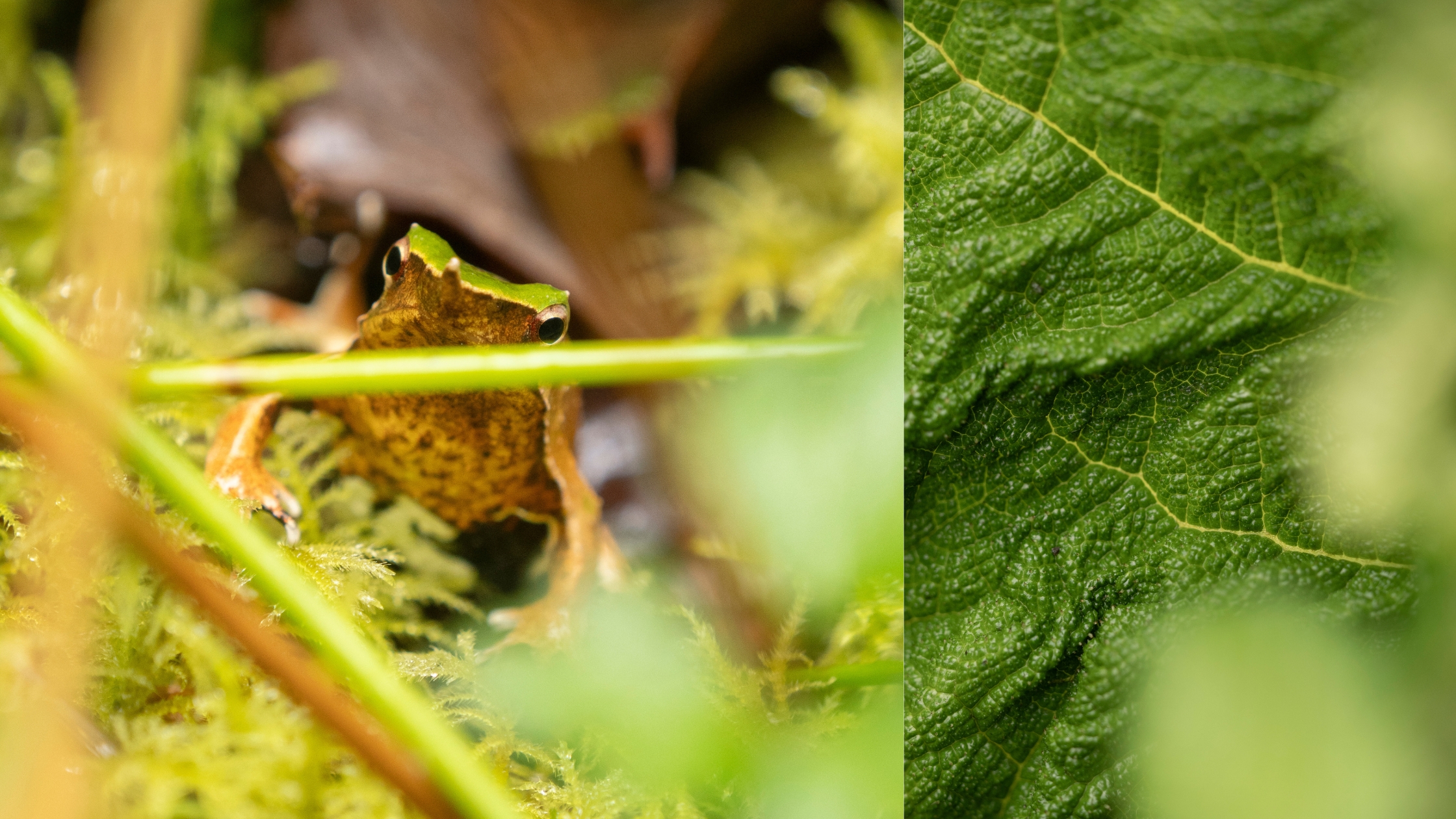
Unlike most amphibians, the Darwin’s frog doesn’t rely on ponds or streams. It lives entirely on the rainforest floor, within layers of moss, ferns, and fallen leaves, depending on humidity and shade for survival. While its petite size, and leaf-like shaped nose and appearance make the Darwin’s frog quite the forest jewel, there’s another reason this cutie fascinates scientists.
The male frog carries his offspring inside his vocal sac, sheltering them for weeks until they emerge as fully formed froglets. Watch this National Geographic video of the birth, equally bizarre and impressive!
Its skin ranges from deep brown to mossy green, patterned to blend seamlessly with its surroundings. When threatened, it performs a tiny leap before lying still on its back, using its underside to confuse predators as a master of disguise. A miniature marvel that could easily go unnoticed by anyone rushing through the forest.

The Darwin Trail – Parque Futangue
Our search took place along The Darwin Trail, a 2.5km guided path winding through native forest on the edge of the reserve. It is the only area in the park where visitors, accompanied by a trained guide, can learn about the frog’s habitat while ensuring minimal disturbance.
The rainforest here feels utterly ancient. Ferns tower overhead, tree trunks shimmer with rain, draped in thick, mossy carpets, and the air hums with the sound of dripping leaves. Along the way, Felipe pointed out native flora reintroduced by the park’s conservation team to strengthen the ecosystem, efforts that allow sensitive species like the Darwin’s Frog to thrive again.
Upon entering the trail, we sprayed our shoes and used a brush to remove all debris in an effort to reduce any chance of the fungus entering the environment. After just a few minutes, Felipe had found one, and while he kept pointing at the leaves on the forest floor, I still couldn’t see it.
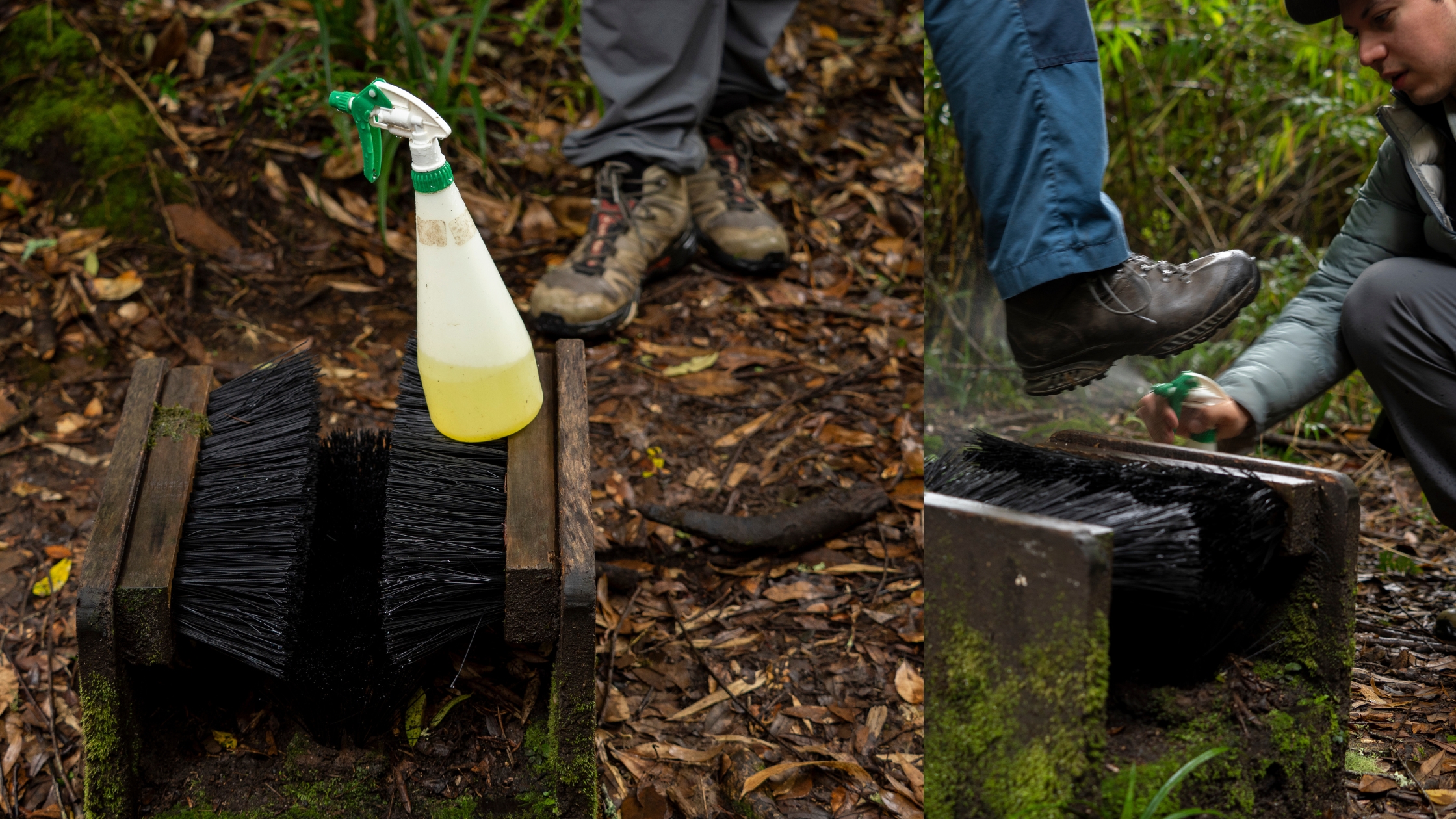
Barely three centimetres long, the frog’s triangular snout and mottled skin blended perfectly with its surroundings. It was astonishing how invisible it seemed until you finally saw it and I quickly realised that having a guide was essential when photographing the Darwin’s frog, not just for conservation purposes, but for success in finding them. Trained eyes > clueless leaf looker.
We slowly wandered the trail with a careful pace, ensuring we didn’t step on any and allowing for plenty of time to scout more. Within 45 minutes, we’d photographed five frogs, each unique in colour, size, and reaction. While some quickly jumped away, one remained content in our quiet presence, allowing for my favourite image below.
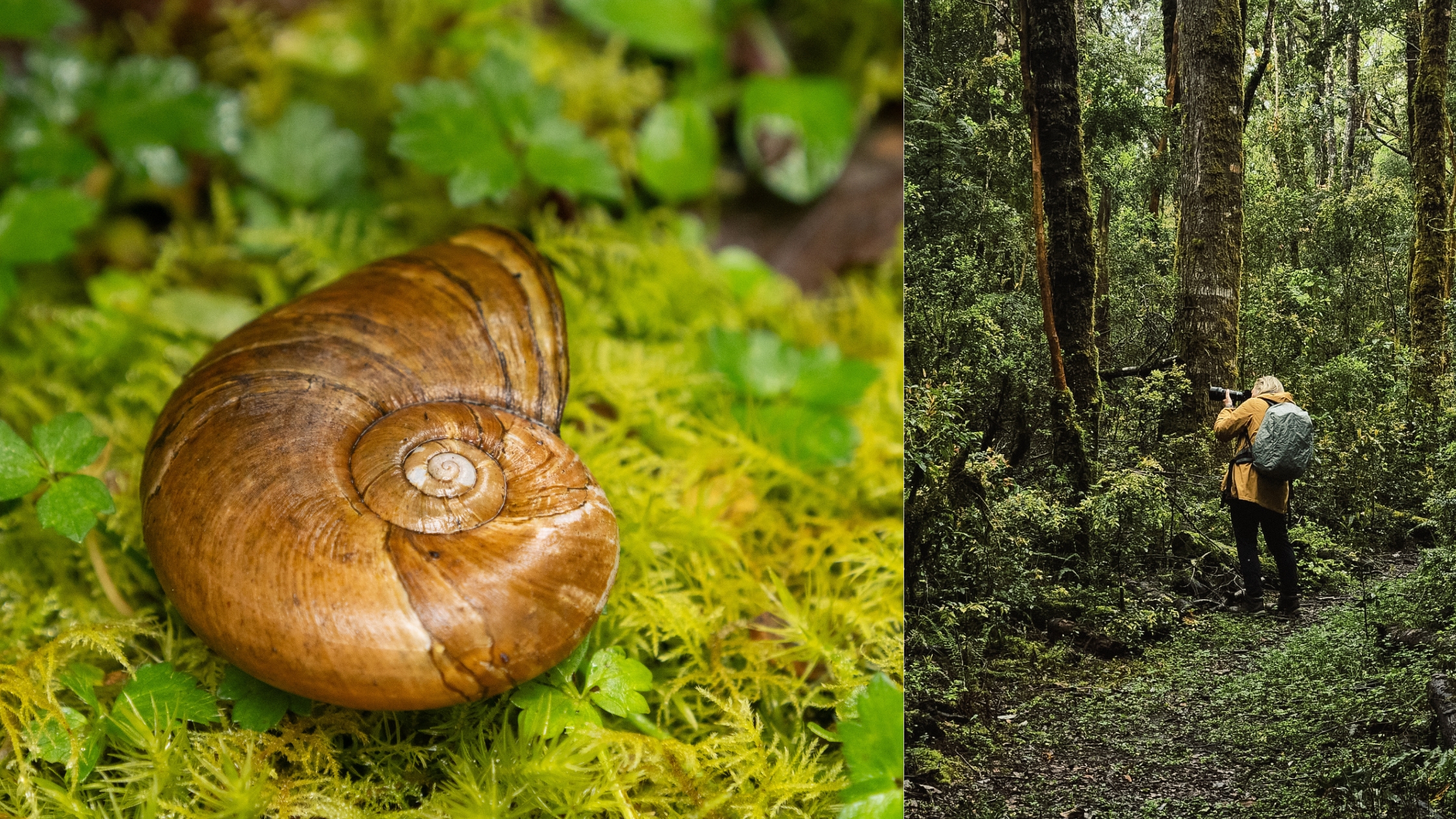
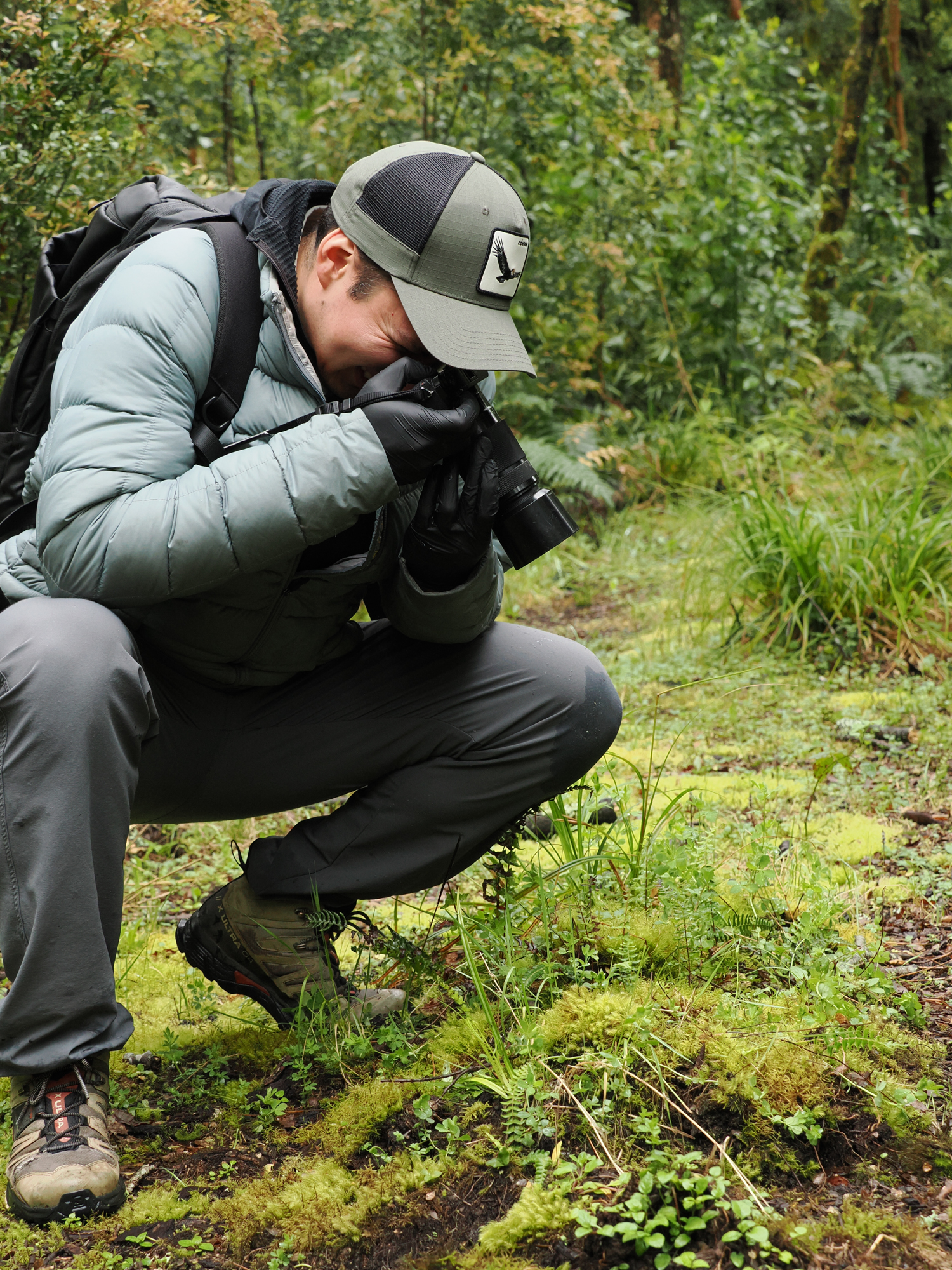
Our Guide – Felipe Guerrero from Parque Futangue
Behind the Lens – Froggy Photography
To photograph these tiny wonders, I used the OM SYSTEM OM-1 MKII paired with the 40-150mm f2.8 pro lens and the MC-20 2x teleconverter. I wanted to allow lots of space between myself and the frog to avoid any disturbance and to incorporate the surroundings with a gorgeous bokeh to help frame the frog.
The greens of the forest, the textures of the leaves, and the way the frog blends into the environment was something I wanted to document and was very happy to have a few chances to do so, opting for a wide aperture of f5.6 most of the time. I think I could’ve spent five days revisiting the trail, it was such a beautiful experience to not only see and photograph the Darwin’s frog, but to wander slowly through the Valdivian rainforest, soaking in the atmosphere, the sounds, and scouring the forest floor for glimpses of the frog.
A collection of images and camera settings below:
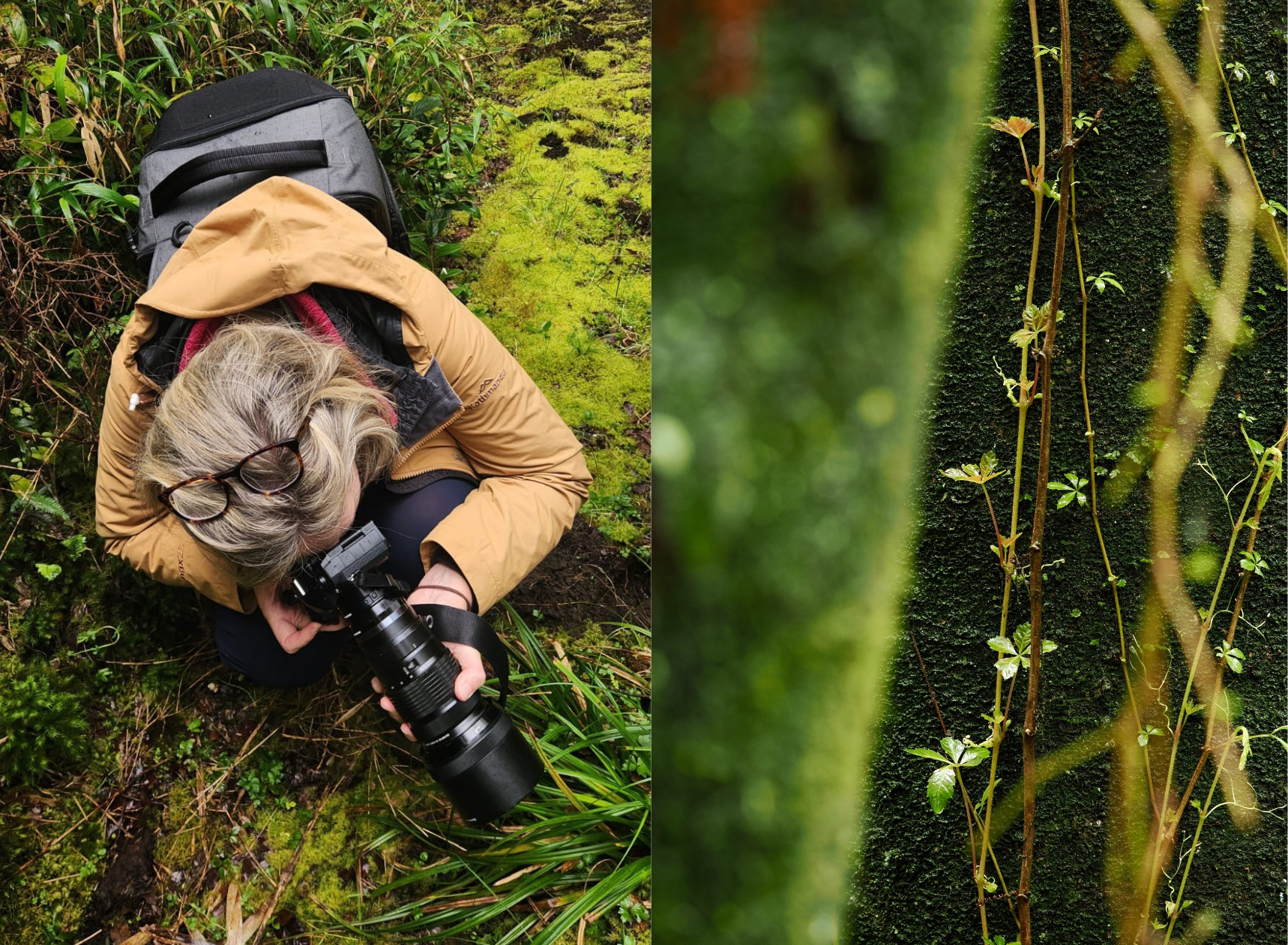
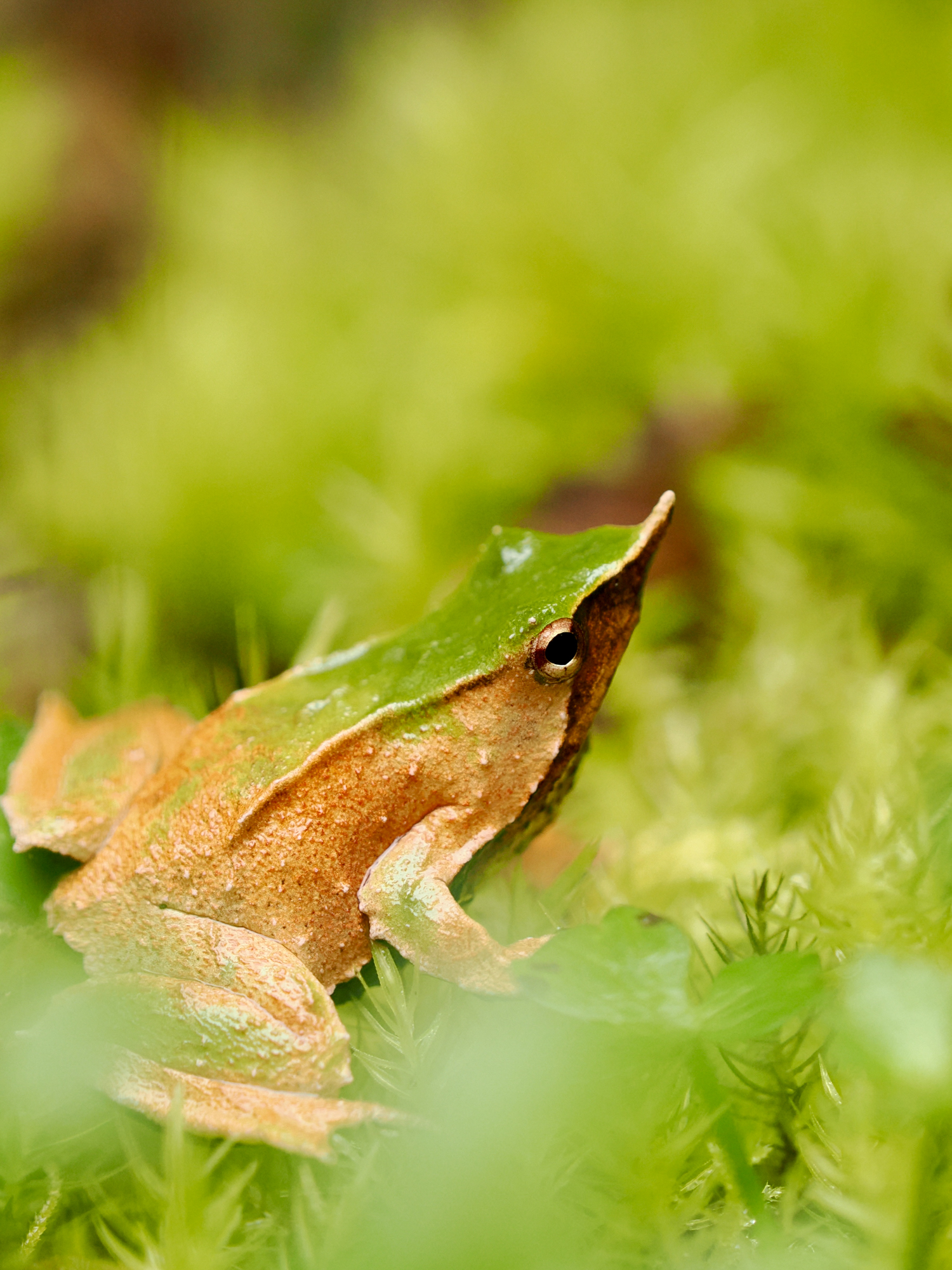
Camera Settings: ISO 1600 | f/5.6 | 1/250sec | OM-1 MKII + 40-150mm f2.8 pro lens and MC20 2x teleconverter at 300mm.

Camera Settings: ISO 1600 | f/5.6 | 1/80sec | OM-1 MKII + 40-150mm f2.8 pro lens and MC20 2x teleconverter at 300mm.
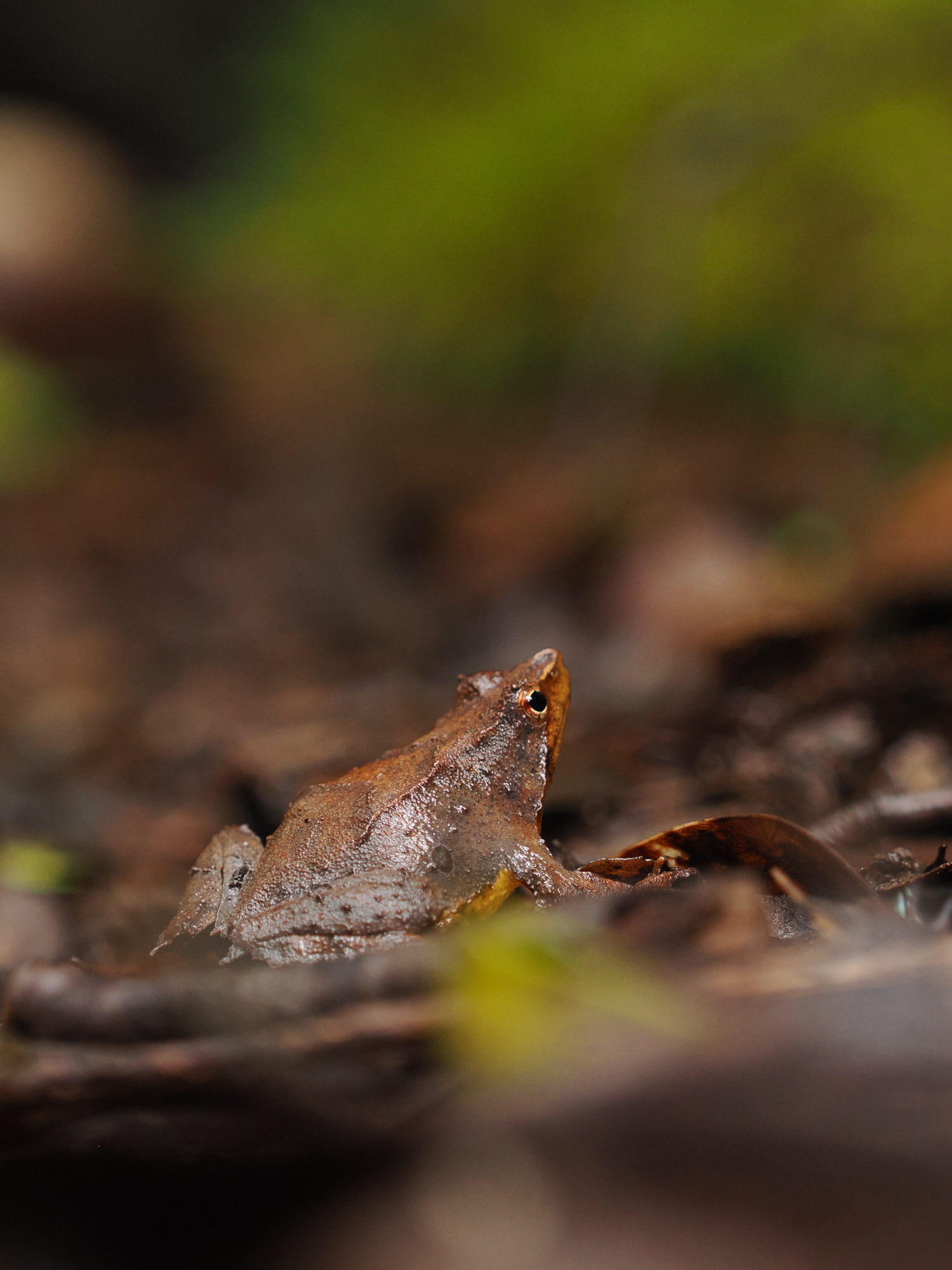
Camera Settings: ISO 1600 | f/5.6 | 1/50sec | OM-1 MKII + 40-150mm f2.8 pro lens and MC20 2x teleconverter at 180mm.
A Species at the Edge – Conservation in Chile
The Darwin’s frog is what biologists call a sentinel species, an indicator of the forest’s health. Its permeable skin reacts instantly to environmental changes, absorbing not just water but the condition of the ecosystem around it. Where these frogs thrive, the rainforest thrives. When they vanish, it signals an imbalance.
Once abundant across Chile’s southern forests, the species is now listed as Endangered on the IUCN Red List. Its decline stems largely from the spread of chytridiomycosis, a fungal disease devastating amphibians worldwide.
In 2023, the fungus reached Tantauco Park in Southern Chile, killing more than 1,300 frogs, 90% of the monitored population in the area, in just one year. This catastrophic loss pushed conservationists into action to study how they can help counter the devastating chytrid fungus. In 2024, 53 healthy frogs were retrieved from the Chilean forest, taking a 7000km journey to London Zoo, where they’ve been studied and reared a further 33 froglets. You can read about the efforts here, or if you prefer, can watch a short film created by the Zoological Society of London about the rescue and conservation efforts.
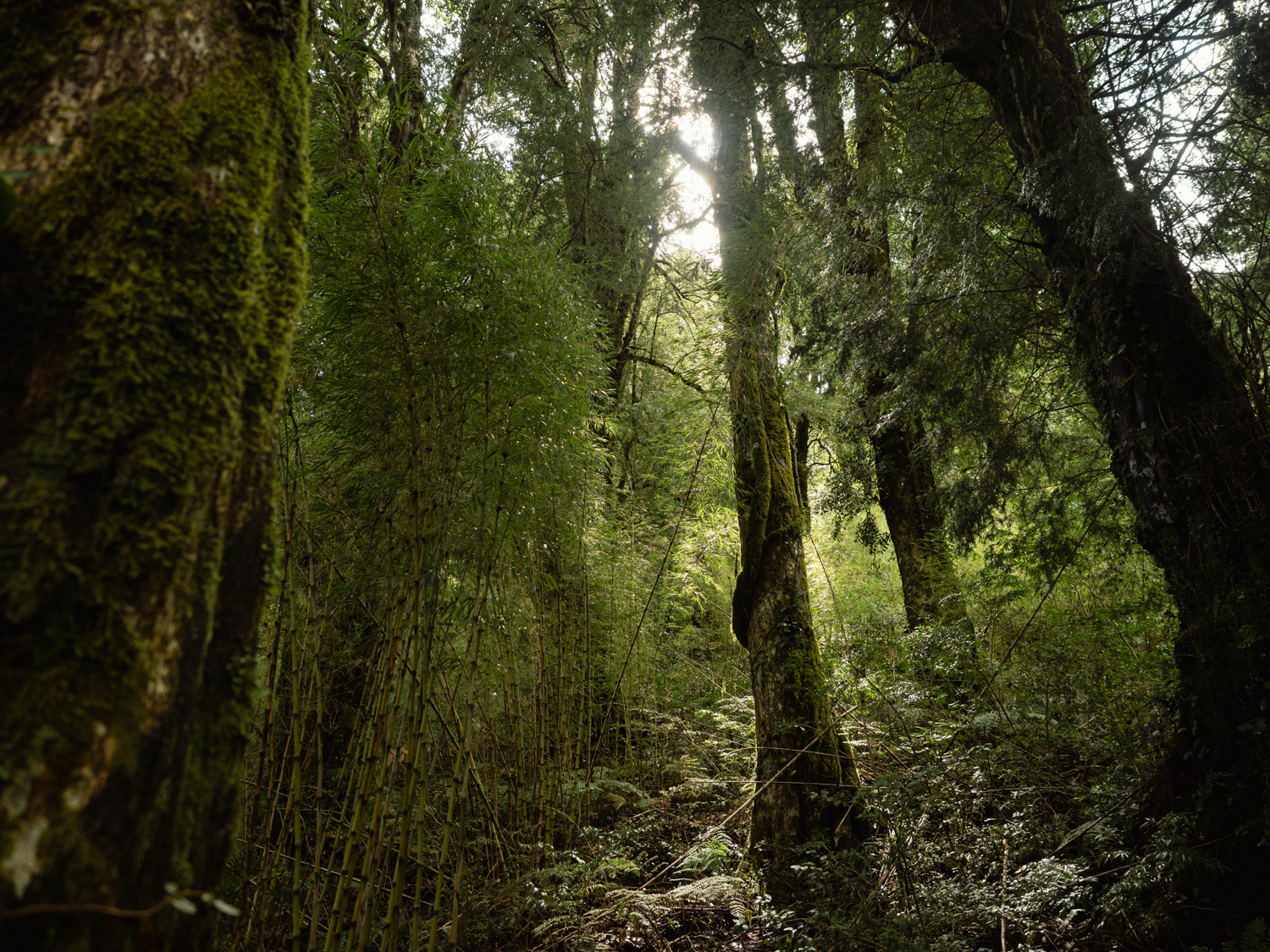
Protecting a Fragile Legacy
Organisations including ONG Ranita de Darwin and Rewilding Chile are leading efforts to safeguard what remains. Together with universities, zoos, and local park authorities, they monitor populations, restore native flora, and manage breeding programmes to maintain genetic diversity. The Binational Conservation Strategy for Darwin’s Frogs, established in 2018, unites experts from Chile and Argentina under a shared vision to protect this species and the ecosystems that sustain it.
One of the most inspiring initiatives is “Yo Protejo Mis Ranitas” (“I Protect My Little Frogs”), run by ONG Ranita de Darwin. It encourages landowners to protect forest patches on their property, expanding conservation zones beyond national parks. Each agreement adds another refuge for amphibians, connecting fragmented habitats and giving the frogs a chance to recover.
At Parque Futangue, these efforts are visible in small but significant ways. Access to the Darwin Trail is strictly guided to reduce disturbance, and the park’s reforestation projects help rebuild native vegetation essential for maintaining humidity and soil health. Standing there, surrounded by dripping trees and filtered light, it was easy to understand the care taken to protect this ecosystem, a reminder that it’s not always about epic moments or landscapes, sometimes we need to look closer and learn about the environments we’re photographing and exploring.

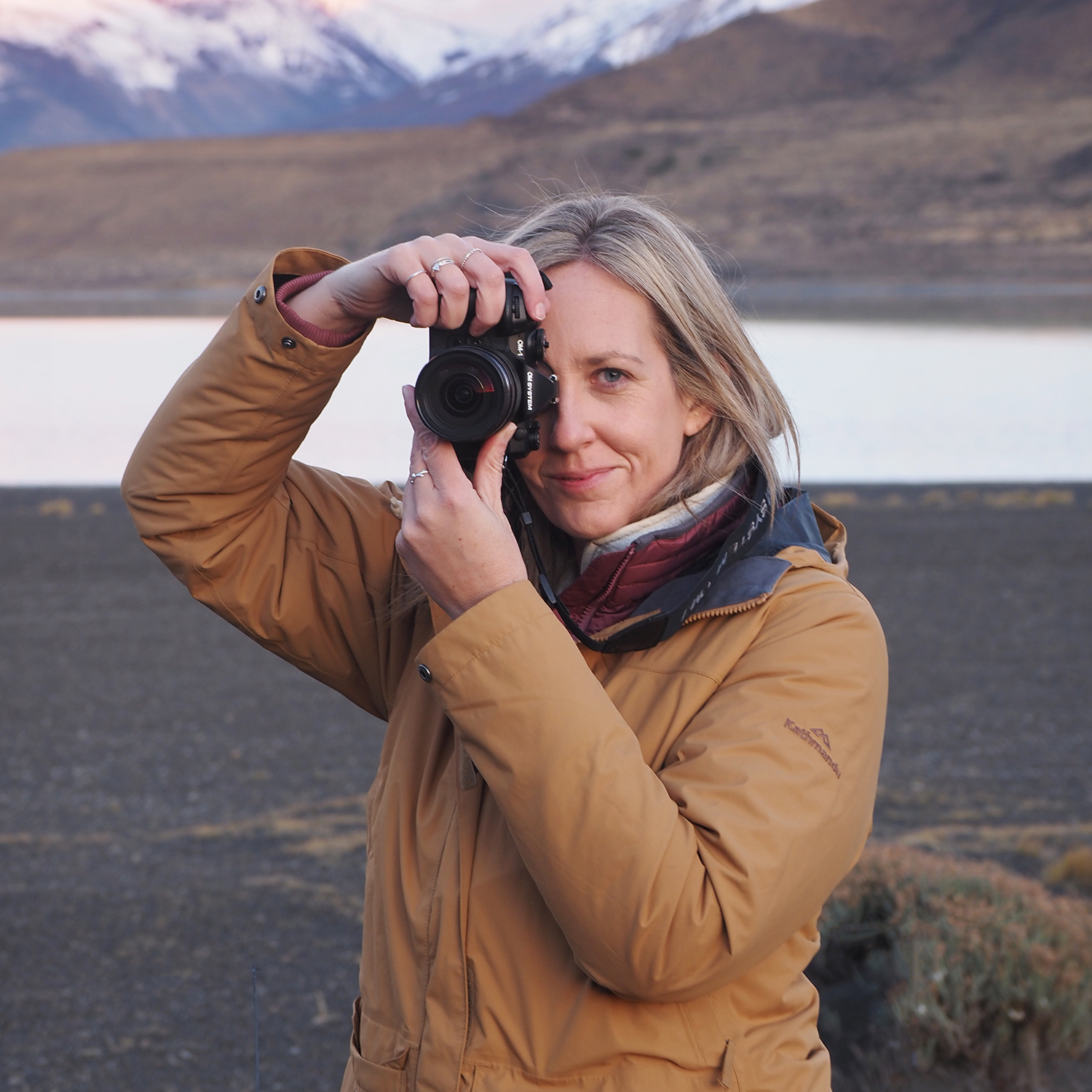
Hello! I’m the founder and photographer behind The Wandering Lens.
With 19+yrs experience as a professional travel and landscape photographer, all advice found on this site is from my personal experience, or that of contributors, on the road. I hope it’s useful for your own travels and would love to hear in the comments about your trips and experiences around the world.




Blog Comments
N Grieve
December 17, 2025 at 8:59 am
I was absolutely spellbound by this beautiful article and the shots of the delicate little frogs you were helped to find.